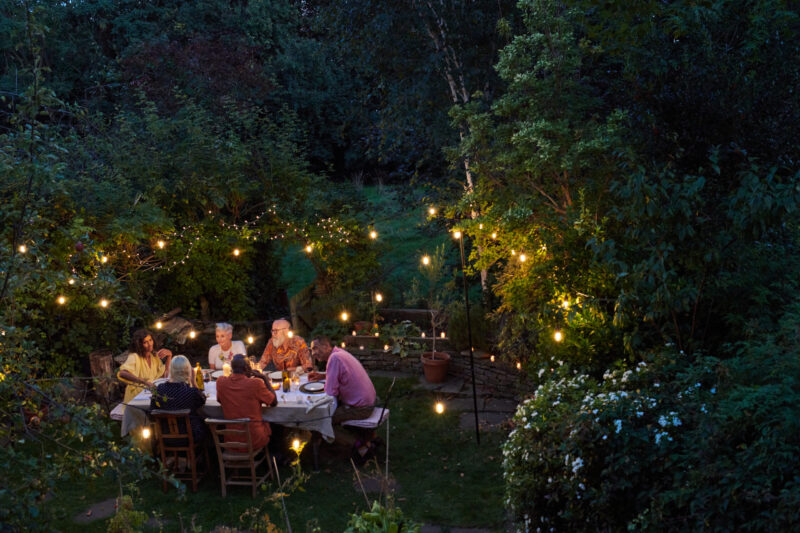Your home is more than four walls and a roof. Filled with the people and things you love, it tells the story of your life. No wonder many studies have found that most people age 50+ say they want to stay in their current residence for as long as possible.
If that is your goal too, now is the time to plan ahead. Have you taken a good look around to see if your home will accommodate the changes your body will likely go through as it ages? While many of us remain healthy and active in our later years, we may still experience changes in vision, strength, flexibility, balance and reach. That often means the house the once “fit” us so perfectly no longer does. It might be time for a remodel.
While we often think about remodeling as a way to update or freshen up the look of our homes, it’s a perfect opportunity to integrate universal design (UD) ideas to create an environment that’s easy for everyone to use—regardless of age, size or ability. UD emphasizes convenience, simplicity, flexibility and adaptability, and includes appealing and stylish features that are widely available today.
One universal design idea that can be applied to just about any remodel project relates to lighting. Why is lighting important? Almost all of us experiences some change in vision by the time we reach 50. We notice print is too small to read and the room is never bright enough. While bothersome, most of us easily manage. More difficult to deal with is the uncorrectable “low vision” caused by eye diseases that are more common in later life such as glaucoma, macular degeneration and diabetes. People with low vision have trouble reading, may be unable to distinguish certain colors and often can’t see low furniture or a slightly raised surface like a door threshold.
The following 10 ideas can make any home a little brighter and easier and safer to navigate. Be sure to consider them in your remodeling plans. You’ll be amazed at the positive impact even simple changes can make.
- Increase the amount of natural light throughout the house. Choose window treatments that diffuse sunlight, not deflect it.
- Supplement natural light with lighting from multiple sources. These may include track lighting, recessed lighting or pendants that hang from the ceiling.
- Add glare-free task lighting over the sink, stove, countertops and island work areas in the kitchen, and over the sink, tub and shower in the bathroom.
- Install additional lighting where safety hazards exist, such in stairways where trips and falls can occur.
- Choose light colored wall coverings, work surfaces and counters to increase the reflectivity of available light.
- Control glare by selecting matte finish paint, wallpaper, counter tops, and other surface materials.
- Choose colors that will remain visible and can be differentiated from one another, for example, use colors from the red orange family against blue, green or other cool colors.
- To help objects stand out from their backgrounds and to help distinguish between surface levels, furnishings, and potential safety hazards, use the “contrast principle” where the object you want people to see contrasts with its background. For example, light colored wall coverings will contrast with darker floors to bring attention to a vertical vs. horizontal surface.
- To help signal a change in elevation between adjacent rooms, use flooring that is in strong contrasting colors. If the floors are the same level, use the same or similar intensities of floor colors.
- Choose a counter top color that contrasts with the color of the floor beneath, to enable the counter’s edge to be easily seen.
For more universal design ideas, visit our website to view videos and download our guide Remodel Today for a Better Tomorrow.
The Hartford Center for Mature Market Excellence® creates innovative business solutions for the mature market. Staffed by gerontologists, the center is uniquely positioned to apply knowledge of aging to develop one-of-a-kind products and services for The Hartford’s customers, and specialized training for The Hartford’s employees. The center conducts original research in partnership with academic institutions and produces public education programs on safety, mobility and independence. The Hartford has had this in-house expertise since 1984, guiding The Hartford to unparalleled success in understanding and serving the mature market.







When is my Hartford Sr Claims Rep going to “follow through w/ The Hartford’s sent out Project Manger to finish the SCOPE he was already paid to do. Much has still not been completed. Much damages came with the total loss from a hail storm on my roof in Oct ’15. WHY DID IT TAKE THEIR “PREFERRED PROVIDER” they hand picked, called and sent to my home to REMOVE and REPLACE my roof 6 months to come to my home for the FIRST time? Why did they PATCH my roof and not REMOVE and REPLACE it per my policy. Why did they not follow the engineer they hired recommendations of “make sure all 26 canales are sealed”?
It was proven through remediation of toxic black mold, called Stachybotrys to the origination point of a canale as the cause of this toxic mold. Why after 3 1/2 yrs my claim has NOT put me back in GUARANTEED REPLACEMENT COST VALUE?
I know this site will NOT post my comment since it is TRUE and I’d like to know WHY my Sr Claims Rep is trying to “pull the wool over my eyes” by telling me, “We put your house back in PRE-LOSS CONDITION. That is NOT how my policy reads, nor the lack of professional attention and workmanship I have rec’d. I have been EXPLOITED by The Hartford and am GREATLY SADDENED BY THEIR LACK OF CUSTOMER SERVICE they advertise to be excellent. IT IS NOT. I have lost valuable time of my life from age 69 to now 72 1/2 of NOT being able to ENJOY MY LATER YEARS while continuing to battle Hartford claims rep and their project manager to complete the SCOPE of repairs given them after Hartford paid a lot of money to several professional, excellent structural engineers to inspect my home, take photos and write up professional reports. Even going to great expense to hire a National Structural Engineering firm and flying one of them down from Denver to Southern NM to inspect my home while I was sent to a hotel while remediation for the 2nd time was being done for 5-7 days which turned out to be 5 MONTHS of being displaced from my home. I was NOT on vacation being disabled and missing my much needed jetted tub to help my chronic, acute spinal “cord” damages. CAROL BERRYMAN
Hi Carol- thank you for reaching out. I have sent your claims adjuster a message to call you. Thank you.